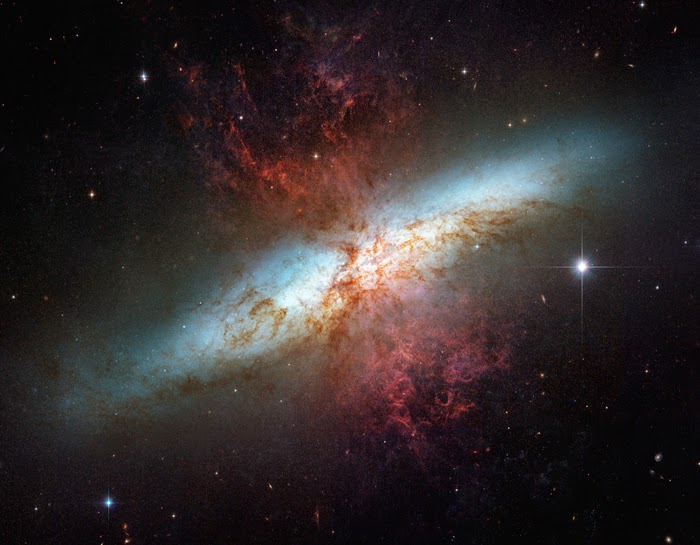 |
| An image of the starburst galaxy, Messier 82 (M82). (Courtesy: NASA, ESA and The Hubble Heritage Team (STScI/AURA)) |
Astronomers in the US have used the flickering of X-rays to pin down the mass of a black hole in the nearby galaxy M82, finding the black hole to be about 400 times as massive as the Sun. This means it is of the rarest, mid-sized black-hole type, and raises the question of how these odd objects arise.
Mass is a fundamental property of any black hole, which has so much gravity that nothing can escape its grip. Black holes come in two main types: stellar-mass black holes that are roughly 10 times as massive as the Sun, such as Cygnus X-1, and supermassive black holes, which are typically millions or billions of times as massive as the Sun and inhabit the centres of large galaxies.
But there is a big gap between the two types. Intermediate-mass black holes "are much, much less studied compared with stellar and supermassive black holes," says Dheeraj Pasham, an astronomer at the University of Maryland in College Park. That is because intermediate-mass black holes are rare, with only one firm example ever identified.
Physics World: Nearby galaxy harbors rarest type of black hole
Comments